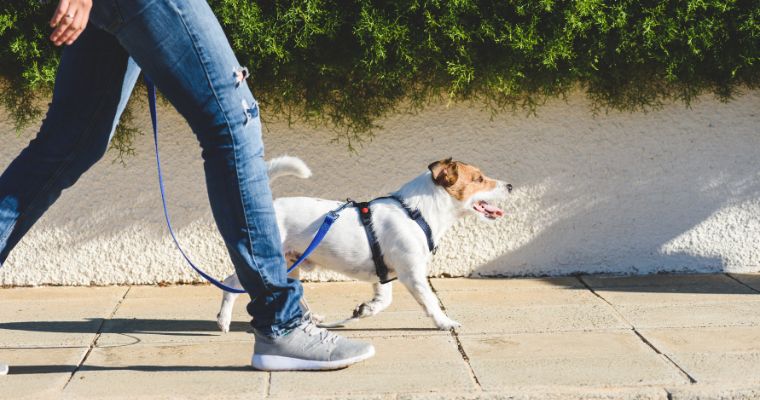One of the most enjoyable and rewarding aspects of dog ownership is taking leisurely strolls with your furry friend. However, for some owners, this can become a constant struggle when their dog tends to pull on the leash, making the walk less enjoyable and even stressful. In this blog post, we will delve deep into the concept of loose leash walking, discuss its importance, and provide a detailed guide on how to effectively train your dog to walk comfortably by your side.

Understanding Loose Leash Walking
Loose leash walking refers to the ability of your dog to walk calmly beside you without pulling or straining the leash. The key to a successful loose leash walk is to maintain a slack leash that forms a gentle “U” shape, allowing both you and your dog to walk at a comfortable pace. Loose leash walking is essential as it promotes a strong bond between you and your dog, enhances safety, and creates a more enjoyable walking experience for both parties.
The Significance of Loose Leash Walking
When it comes to safety, dogs that pull on their leash can inadvertently cause their owners to trip or lose balance. Additionally, dogs that pull are more likely to escape their collar or harness, potentially putting themselves in harm’s way. Loose leash walking also allows you to communicate with your dog more effectively through gentle leash cues and body language. With a loose leash, you have better control over your dog’s movements, helping you to manage situations with other dogs, people, or distractions. Moreover, walking together in harmony strengthens the bond between you and your dog, as it fosters trust, respect, and mutual understanding.
Essential Steps to Train Your Dog for Loose Leash Walking
1. Choosing the right equipment: The first step in training your dog for loose leash walking is to select the appropriate gear. Opt for a sturdy, comfortable collar or harness that fits your dog properly, and a 4-6 feet long leash. Avoid using retractable leashes, as they can encourage pulling and provide less control.
2. Establishing a foundation: Before you embark on loose leash walking training, it’s crucial to ensure that your dog is familiar with basic obedience commands, such as “sit” and “stay.” These commands will help you establish control and set the stage for the more advanced skill of loose-leash walking.
3. Starting indoors: To set your dog up for success, begin the training process in a familiar, low-distraction environment, such as inside your home. Encourage your dog to walk beside you by luring them with treats or toys, and use your chosen verbal command, such as “heel” or “with me,” to signal that you want them to stay close.
4. Rewarding good behaviour: One of the most critical aspects of loose-leash walking training is using positive reinforcement techniques. Praise your dog verbally, offer treats, or provide toys as a reward when they maintain a loose leash. This will help them understand that walking calmly by your side is a desirable behaviour.
5. Increasing distractions gradually: As your dog becomes more comfortable with loose leash walking indoors, start practising in your backyard and eventually progress to public places with more distractions. This will help your dog generalize the loose leash walking behaviour in various environments.
6. Implementing the “turnabout” technique: If your dog starts pulling, immediately change direction and encourage them to follow you. This technique teaches your dog to pay attention to your movements and discourages pulling. Be sure to praise and reward your dog when they adjust their pace to match yours.
7. Maintaining patience and consistency: Loose leash walking is a skill that requires time, patience, and consistent practice. It’s essential to remain patient with your dog as they learn this new skill and to practice regularly to reinforce the desired behaviour. Over time, with dedication and persistence, you will notice significant improvements in your dog’s ability to walk calmly beside you.
4FT/6FT/8FT/10FT Dog Lead, Classic Solid Colours. Strengthened with Leather Tailor Connection Heavy Duty Silver Clasp.
This lead is strong and well-made and has plenty of positive reviews.
Conclusion
Loose leash walking is an essential skill that every dog should learn for a safer, more enjoyable walking experience. It enhances the bond between you and your canine companion, improves communication, and allows for greater control in various situations. By following the steps outlined in this guide, choosing the right equipment, and maintaining patience and consistency, you can transform your daily walks into a pleasant and enjoyable experience for both you and your dog. So take the time to invest in this invaluable skill and reap the rewards of a stronger relationship with your four-legged friend as you explore the world together.


